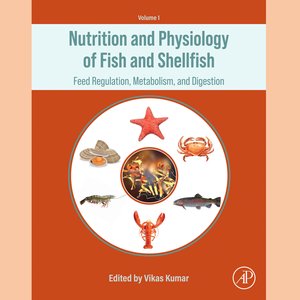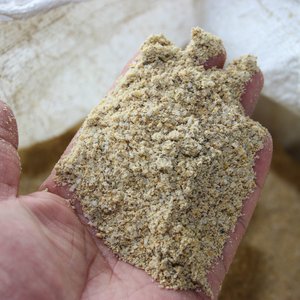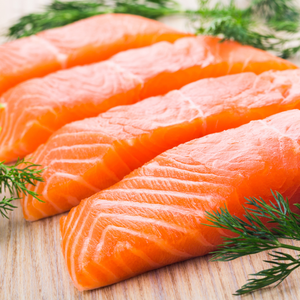Production of both fishmeal and fish oil from Peru in the first quarter of 2015 was very low due to the cancellation of the second anchovy fishing quota in 2014. Prices have gradually settled down from their peak witnessed at the end of 2014. Since then, markets have remained quiet, as buyers are reluctant to build up stocks while prices remain on the downward trend.
With the first anchovy fishing season quota in Peru set at 2.58 million tonnes, a normal price range for fishmeal is expected this year. The projection of a strong El Niño phenomenon has caused Peruvian fishing companies to expedite their fishing activities before fish are increasingly driven to the south or deeper water.
Production
In the first quarter of 2015, fishmeal production from the top five producing countries was slightly higher compared with what was produced for the same period last year. However, the production in Peru and Chile dropped almost by half to only 72 000 tonnes, which is the lowest production in the past six years. This low production in Peru is clearly due to the cancellation of the second anchovy fishing season in 2014, which was based on a negative anchovy biomass findings by IMARPE. Production of fishmeal in Europe made up for the supply gap, especially when Iceland’s capelin fishing began harvesting with their substantially increased quota. Nevertheless, the landscape of the industry is still largely determined by Peru’s production.
The production of fish oil faced obviously the same situation as fishmeal in the first quarter of 2015. Production from Peru and Chile dropped by 53%, resulting in 24 000 tonnes during this time period. Slightly higher production from Denmark, Norway and Iceland managed to close the supply gap, though only barely. Growing fish oil demand and quota restrictions continue to put upward pressure on fish oil prices.
Exports
As expected, in the first quarter of 2015, fishmeal exports from Peru dropped to 55 200 tonnes, which is less than 15% of the level for the same period in 2014. Almost all of the major export destinations reduced their import volumes dramatically. Notably, Germany and the UK imported nothing from Peru during the first three months due to low demand from the aquafeed industry in Europe. Though the major reason for the low export volumes was of course the cancellation of the second anchovy fishing season in 2014, another major factor was high prices. Though prices have been on a downward trend since late last year, they still remain at a high level and have kept buyers from closing transactions. The NOK declining against USD was another factor to keep feed raw material buyers away from Peruvian fishmeal.
Peru only exported 16 300 tonnes of fish oil in the first three months, the lowest in recent history, for the same reasons above. Chile became an alternative producer for many markets, and as a result almost doubled its fish oil exports during the first quarter.
Markets
In the European market, due to the high prices of fishmeal and the low seasonal demand from the aquaculture feed industry, the markets have been relatively quiet. Buyers are also holding off as they expect Peruvian prices to settle downwards significantly. Major buyers, including China, are in no rush to build up their stocks.
It is interesting to see how trade has shifted due to the limited Peruvian supply available. Both the UK and Germany imported mainly from sources other than Peru. Germany tripled its fishmeal import from Morocco. The UK shifted its major fishmeal sourcing to other European countries.
Prices
After super prime fishmeal reached a record high level of USD 2 400 per tonne (FOB Peru) at the end of 2014, prices have been easing slowly. With the opening of the first anchovy fishing season this year, Peruvians tried to catch the whole quota before an expected strong El Niño phenomenon makes it impossible to harvest later in this year. The expectation from the industry is that with the first fishing quota in Peru set at 2.58 million tonnes, or 600 000 tonnes of fishmeal production, prices would definitely revert back to normal levels. Low demand from the aquafeed industry is also helping to ease demand pressure. Fish oil prices witnessed the same trend since late last year, though now that trend seems to be reversing. Prices recorded for fish oil in June 2015 were at the same low level seen in early 2012.
Soymeal prices have dropped since the end of 2014, though this seems to be the result of a seasonal decline that occurs at the beginning of most years and thus will not change the general upward trend of soymeal prices. Since December 2014, the ratio between the prices of fishmeal and soymeal has maintained over 4.1:1, which has been quite attractive for feed producers looking for alternative raw materials.
Outlook
Unavoidably, 2015 will be another year for the world to witness how volatile the fishmeal sector is, especially with a significant El Niño predicted. In late May, Enfen, the Peruvian committee watching El Niño, increased its projection from ‘moderate’ to ‘strong’. NOAA recently reported that “there is a greater than 90% chance that El Niño will continue through the Northern Hemisphere in fall 2015, and around an 85% chance it will last through the 2015-2016 winter.” With these predictions, it can be expected that the total first quota will be caught before 30 June, but there will be much uncertainty about the amount of the second fishing quota as well as the amount of anchovy actually caught out of that quota. As a result, fishmeal and fish oil production in Peru and Chile will not remain at the normal level for the rest of 2015.
Looking at the markets, trade is predicted to become more active, with demand from all major markets recovering from their seasonal low. As the market will be concerned over another price hike resulting from the supply shortage, it is expected that sales will occur quickly in order to build up stocks to take advantage of the relative low prices. It is predicted that the market situation in the short term will be more or less the same as in the second half of 2014, if not worse.
Overall, demand for fishmeal and fish oil from the aquaculture and terrestrial farming industry will remain strong in the long run due to its contribution to global food security and nutritional benefits. With many efforts in this sector to explore other alternatives, such as trimmings from processing factories, vegetable oil and meal, prices for fishmeal and fish oil will remain firm.
Read the full report here.







